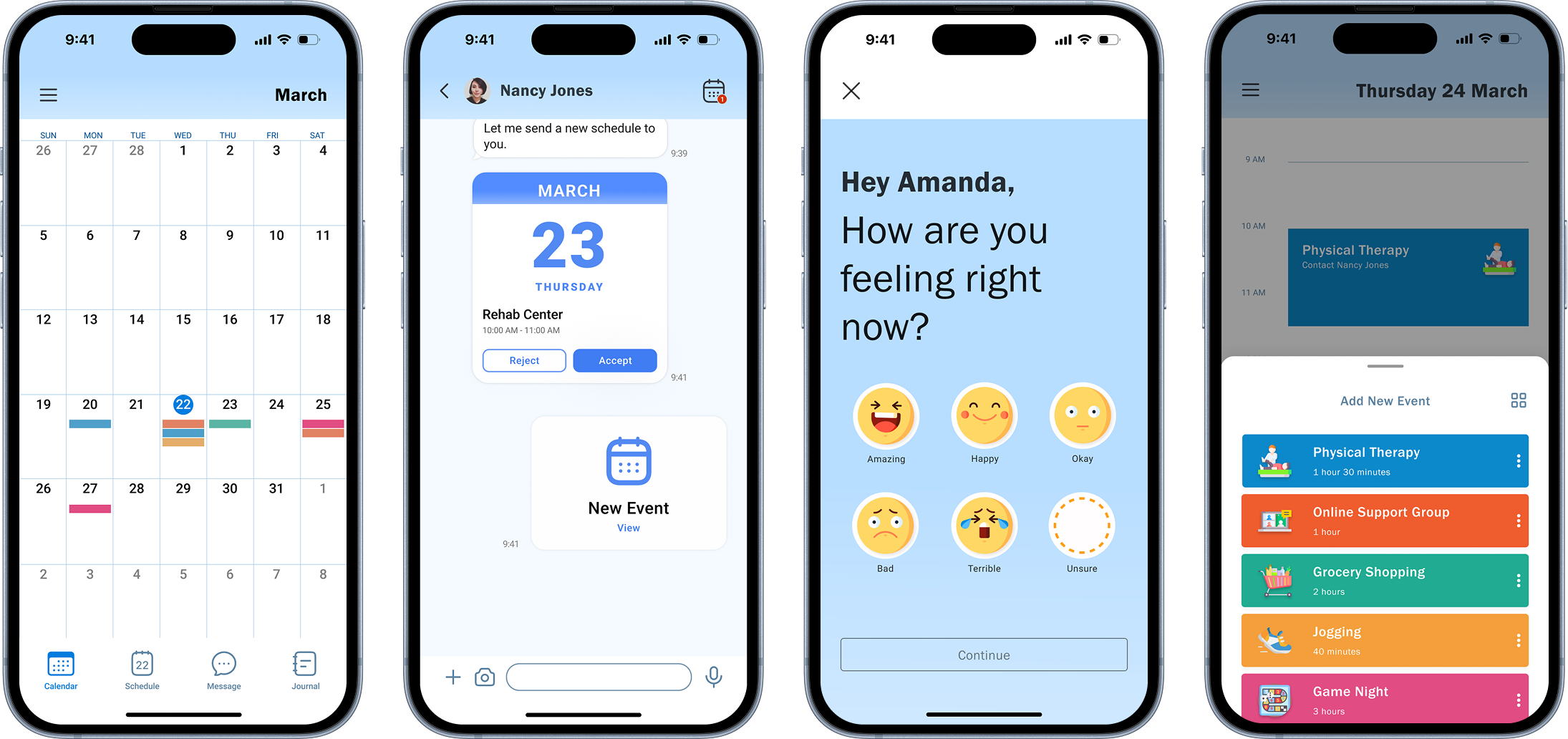Planit

project type
In collaboration with CreateAbility, Inc., we designed a planning and scheduling app to support individuals with Traumatic Brain Injury (TBI). The goal was to address memory and decision-making challenges through a simple, research-informed tool.
As the UX Designer, I led secondary research to help the team understand TBI symptoms, planned the research approach, conducted user interviews and usability tests, and contributed to ideation, sketching, and prototyping.




















